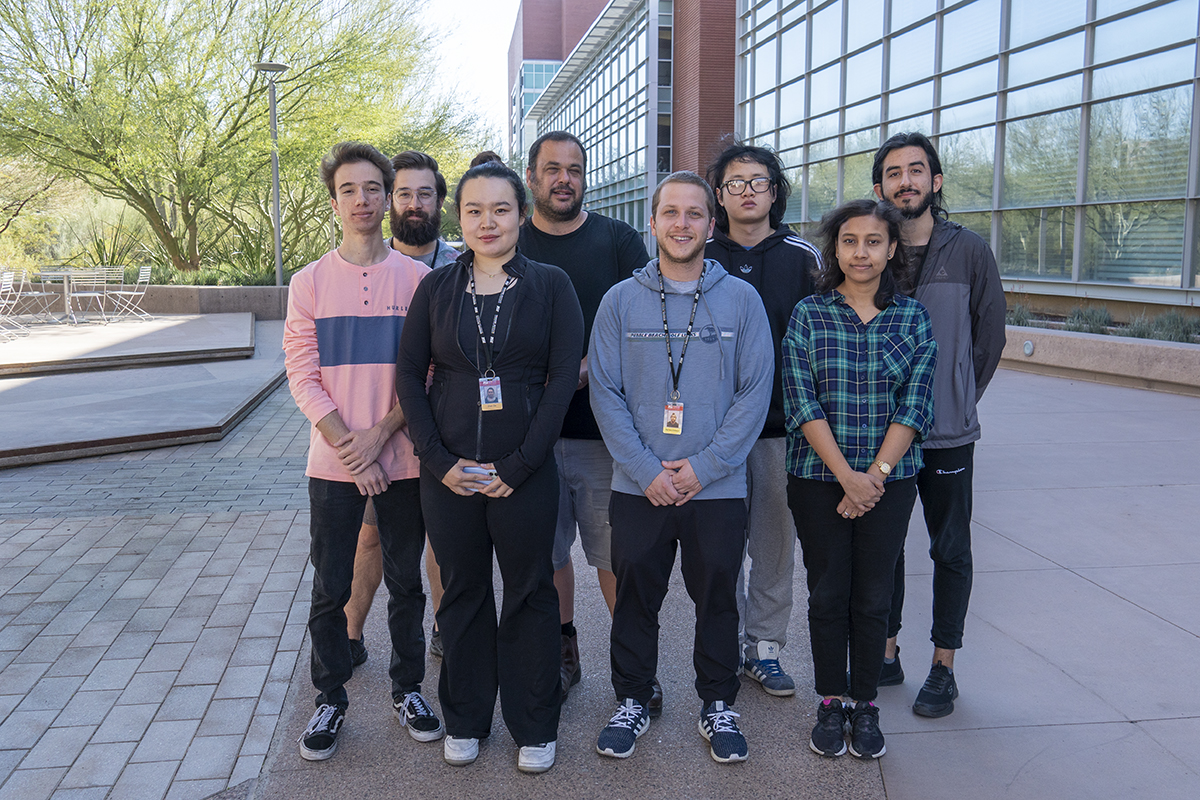ASU professor to study the structural biology of photosynthetic supercomplexes with NSF CAREER Award

Yuval Mazor is an assistant professor in the School of Molecular Sciences and the Biodesign Institute at ASU. Photo by Mary Zhu/ASU
Plants, algae and cyanobacteria use photosynthesis to produce oxygen and reduce carbon, like carbohydrates, which builds and fuels our entire biosphere.
“Supercomplexes are associations between antennae proteins and photochemical reaction centers that exist in all photosynthetic organisms,” said Yuval Mazor, an assistant professor in the School of Molecular Sciences and the Biodesign Institute’s Center for Applied Structural Discovery.
Mazor was recently awarded a prestigious Faculty Early Career Development (CAREER) Award from the National Science Foundation. The program identifies the nation’s most promising young faculty members and provides them with funding to pursue outstanding research, excellence in teaching and the integration of education and research. Often, these awards spur the creativity of the faculty member, helping to set them on an innovative career path.
“Yuval’s proposed work targets the most essential function carried out by living organisms — using light to create food and oxygen,” said Professor Tijana Rajh, director of the School of Molecular Sciences, which is part of The College of Liberal Arts and Sciences.
“The ability to observe large numbers of individual complexes performing their functions using cryogenic electron microscopy (cryo-EM) will elucidate the differences enabling the same protein complex to carry out different functions in plants, and will shed light on how changing structures and complex components correlate with switching in their primary role to make food and oxygen.”
Rajh added, “It is so exciting to see how rapidly evolving new approaches in cryo-EM are revolutionizing our abilities to understand the role of structure for different functions carried out by essential protein supercomplexes, such as photosystem I.”

From left to right: Alan Nisanov, undergraduate research student; Christopher Gorski, grad student; Zhen Da, grad student; Yuval Mazor; Zach Dobson, grad student; Jin Li, grad student; Halima Khatun, grad student; and Randel Maqdisi, undergraduate research student. Photo by Mary Zhu/ASU
Understanding photosynthesis
There are two pigment-protein complexes that orchestrate the primary light reactions in oxygenic photosynthesis: photosystem I (PSI) and photosystem II (PSII). Understanding how these photosystems work their magic is one of the long-sought goals of science.
“The long-term goal of this project is to develop a high-level understanding of the function of photosynthetic supercomplexes together with the ability to manipulate their properties in photosynthetic organisms,” Mazor said.
To achieve this goal, Mazor’s group plans to discover new structures of the PSI complex in eukaryotes. PSI is one of the most complicated assemblies in nature. Like many large cellular structures, PSI interacts with many cellular factors to carry out distinct functions. These functions are still not clearly explained in our structural description of PSI.
This proposal tackles this issue using cryo-EM supplemented with functional analysis to discover supercomplexes adjusting energy flow around PSI in plants.
Electron flow in photosynthesis follows two main modes: linear electron flow or cyclic electron flow (LEF or CEF respectively). By balancing these two pathways, photosynthetic organisms adapt the output of the photosynthetic machinery to cellular needs. The potential for engineering photosynthetic organisms to achieve higher productivity or to synthesize specific chemicals is great but requires better basic understanding of this machinery.
The balance between CEF and LEF affects both the ATP/NADPH (energy storage and electron carrier/donor molecule) synthesized in the cell and the induction of photoprotective mechanisms. These mechanisms are a major response to cellular stress.
“By determining high-resolution structures of these complexes, our mechanistic understanding of the basic systems controlling electron flow modes in photosynthesis will greatly improve. I’m very happy to receive this award, and we are looking forward to doing the research,” Mazor said.

Overall structure of PSI-IsiA supercomplex.
Broader impacts
As part of this proposal, one graduate student and a number of undergrad students will receive broad scientific training. Summer internships for veterans will also be offered in the lab to facilitate reintroduction into civilian life through science.
In order to increase public access, virtual reality renderings of supercomplexes and thylakoid membranes will be generated. These renderings will be a great conduit to raise interest in science in general, and photosynthesis in particular, by bringing very complicated systems to life. These renderings will be incorporated into the biochemistry and photosynthesis courses taught by Mazor as an aid in visualizing advanced concepts, such as electron transport, excitation energy transfer and the dynamic nature of protein interactions.
Understanding the complexity and functions of PSI supercomplexes will ultimately help to ensure that we have a stable energy supply on Earth.
More Science and technology

Applied Materials invests in ASU to advance technology for a brighter future
For nearly 60 years, global giant Applied Materials has been hard at work engineering technology that continues to change how…

Meet ASU engineering students who are improving health care, computing and more
Furthering knowledge of water resource management, increasing the efficiency of manufacturing point-of-care health diagnostic…

Turning up the light: Plants, semiconductors and fuel production
What can plants and semiconductors teach us about fuel production?ASU's Gary Moore hopes to find out.With the aim of learning how…

